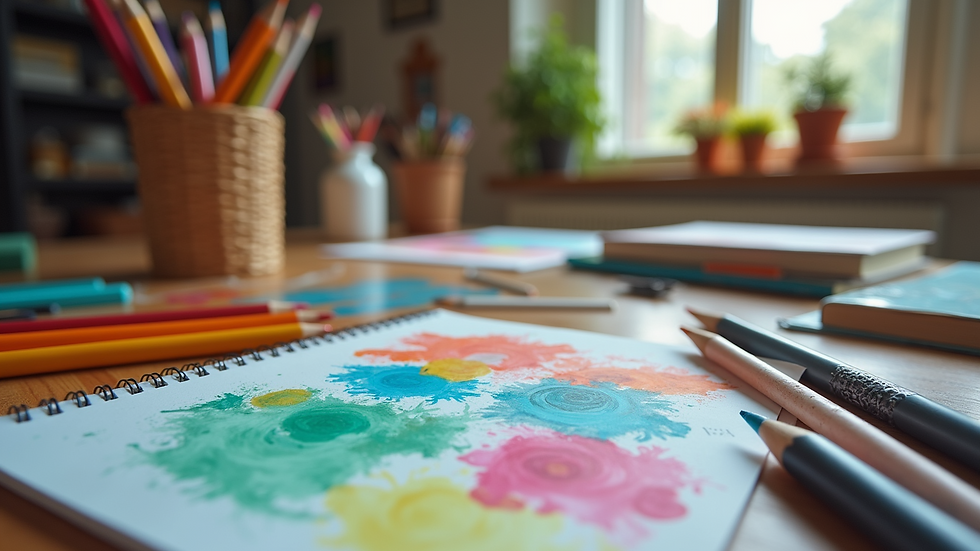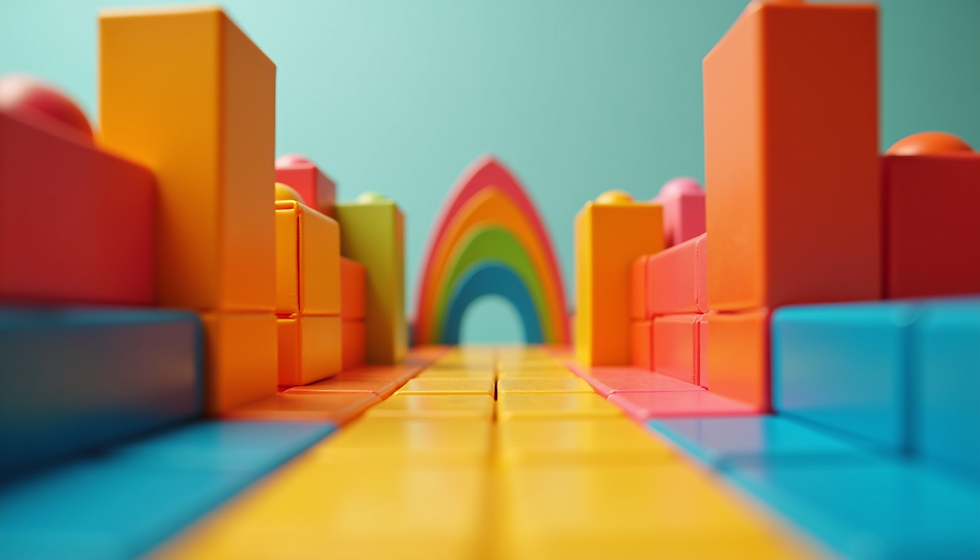The Role of Math and Arts in Supporting the Development of Special Needs Children
- Gifted Gabber

- Apr 20
- 4 min read
The developmental journey of special needs children is unique and requires a thoughtful approach. Engaging these children in various disciplines can make a significant difference in their growth. Among these disciplines, both math and the arts offer critical resources that enhance cognitive, emotional, and social development.
The Importance of Math for Special Needs Children
Mathematics goes beyond numbers; it helps foster logic, problem-solving, and analytical thinking. Engaging with math can be especially valuable for special needs children as it helps them build essential life skills.
For instance, the structured nature of math can greatly benefit these children. Learning math typically involves sequential steps, allowing children to build confidence with each mastered concept. For example, a child who learns to count from 1 to 10 feels a sense of accomplishment that can empower them to tackle future challenges. This feeling of achievement is crucial, particularly for children who may struggle in other areas.
One effective way of teaching math is through sensory experiences. For example, using beads to teach addition helps children visualize and physically manipulate numbers. This hands-on approach can make abstract concepts more accessible. A study showed that children who engaged with physical objects during math lessons improved their understanding by 30% compared to those who did not.
Moreover, learning math promotes decisive thinking and reasoning. These skills are vital not only in school settings but also in everyday life. For example, understanding money management can help children make better choices when shopping for snacks.
Integrating the Arts in Learning
While math sharpens cognitive abilities, the arts help cultivate creativity and emotional expression. Activities like painting, music, and drama provide special needs children with unique opportunities to express their thoughts and feelings, often more effectively than through verbal communication.
The arts stimulate imagination, which is important for children who may have communication barriers. For example, a child with autism might find it easier to express feelings through a painting than through words. Creative outlets enable children to explore their identities, building self-esteem and confidence along the way.
Participating in arts also encourages social skills through teamwork. Group art projects can lead to meaningful interactions. A study found that children who engaged in collaborative art projects saw a 25% improvement in their social skills over six months, highlighting the immense social benefits that come from artistic collaboration.
The sensory aspect of the arts further enhances learning. Using different textures, colors, and sounds in art projects can engage children who may have sensory sensitivities. For example, incorporating materials that are visually striking or that have interesting textures can captivate students' attention and inspire creativity.

The Synergy Between Math and Arts
Although math and the arts may seem unrelated, their integration can lead to holistic development for special needs children. Many educational theories encourage this interdisciplinary approach, emphasizing that connections can improve learning outcomes.
The intersection of math and art can be found in various examples. For instance, geometry plays a significant role in art, where artists use shapes and patterns to create visually appealing works. Activities could include creating geometric designs or learning about symmetry through painting, which solidifies math concepts while fostering creativity.
By designing projects that involve both disciplines, educators can cater to diverse learning styles. Visual learners may excel in artistic projects involving shape composition, while kinesthetic learners thrive during hands-on activities that combine numbers and art. Blending these subjects allows for a more inclusive approach to education.
Practical Strategies for Educators and Parents
To effectively support special needs children through math and the arts, educators and parents can implement several practical strategies.
Create a Multi-Sensory Learning Environment: Integrate manipulatives, visual aids, and creative materials into math lessons. Involving music or art during problem-solving sessions can cater to different sensory preferences.
Focus on Individual Strengths: Identify each child’s strengths in either math or the arts, and tailor activities to nurture these abilities. For example, if a child loves music, use rhythmic patterns to reinforce math skills.
By embracing technology, educators can use software designed specifically for special needs learners, combining math and arts for an engaging experience. Dynamic apps can capture children’s interests while providing personalized learning opportunities.
Collaborative Projects: Encourage group activities that allow children with different strengths to work together. This interaction can foster both learning and essential social skills.
Celebrate Progress: Regularly acknowledge small achievements. Whether a child has improved their counting skills or completed a beautiful artwork, celebrating these milestones can significantly boost their motivation and self-confidence.
Embracing a Holistic Approach
Math and the arts are powerful tools for supporting the development of special needs children. By creating supportive and integrated learning environments, educators and parents can help foster a sense of achievement, promote cognitive and social skills, and encourage creative expression.
Recognizing the interrelatedness of these subjects creates a richer educational experience. As we advocate for comprehensive educational strategies, embracing both math and the arts can nurture the potential of every child, empowering them to face life's challenges with confidence.




Comments